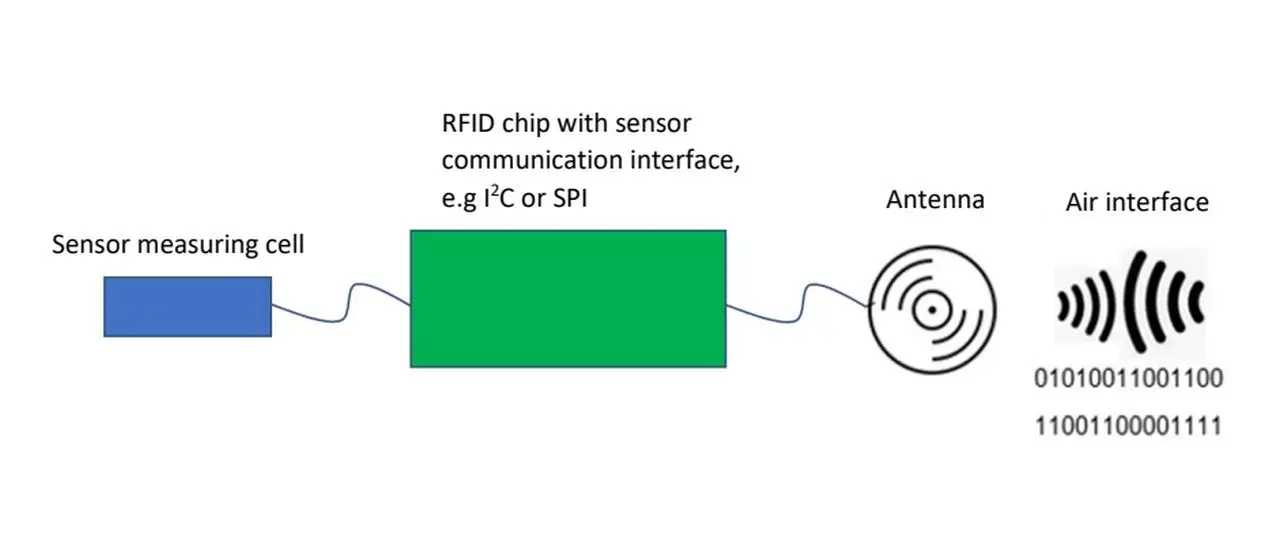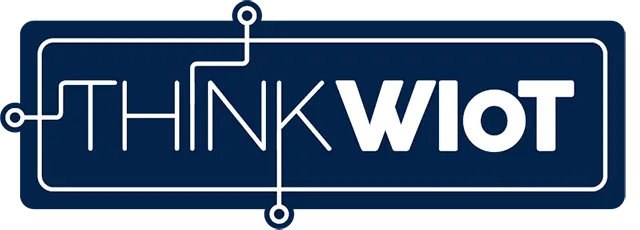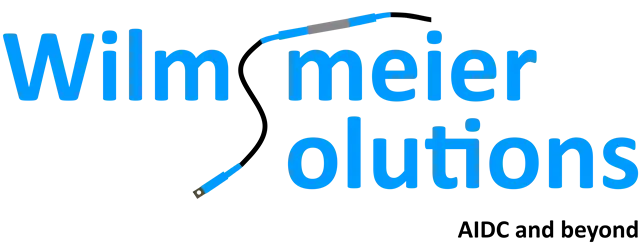AIM-D White Paper on RFID and Sensor Technology Published

The digital twin needs data!
In addition to the unique identification of the physical object, relevant data for the digital twin should or must be recorded as automatically as possible. RFID & sensor technology can be a perfect symbiosis for this. Reliable, often battery-free sensor transponders are always helpful when they offer real added value compared to a wired solution.
The German-speaking chapter of the AIM Association recently published a white paper on this topic, which gives an overview of the technology, highlights the possibilities and advantages of combining passive RFID technology and sensor technology. The white paper also provides assistance in weighing up whether the combination of technologies makes sense for your own application.
The white paper also uses specific application examples to show how RFID & sensor technology can be used successfully.
The white paper was prepared by the experts of the AIM-D "RFID & Sensor Technology" workgroup. The head of the expert group is Olaf Wilmsmeier of Wilmsmeier Solutions. Main editors and contributors are Thorsten Enthöfer from Turck, Johannes Becker from Schreiner, Thorben Grenter from Fraunhofer IMS, Peter Peitsch from Microsensys, Oliver Pütz-Gerbig from Leuze, Gerd vom Bögel from Fraunhofer IMS, Günther Trautzl from INPAQ Europe, Tobias Dräger from Fraunhofer IIS, René Fachberger from SensIDeon, Alex Decker of smart-TEC, and Michael Kaiser of Kathrein Solutions.
- Olaf Wilmsmeier, Founder & Owner
About this white paper
This document describes the basic structure of an RFID transponder with sensor functionality (sensor transponder), the required peripheral devices (RFID system) and is intended to provide interested parties with assistance in planning, configuring and using the system.
Furthermore, the paper contains application examples and best practices for the use of RFID transponders with sensor functionality and is intended to serve as inspiration for solving problems from many areas of industry and logistics / intralogistics with the help of "RFID with sensor functionality" technology.
Definition and scope
The white paper explicitly only considers the combination of RFID transponders with sensor technology. Other transmission media and technologies (e.g. battery-supported BLE, LoRaWan, etc.) are characterized by different requirements and boundary conditions and are not considered here. However, similar applications can be realized with these technologies.
Standards
RFID applications are operated in several frequency bands which are internationally harmonized. The technical requirements are defined in standards, with different requirements for the LF, HF and UHF ranges.
The air interface and the protocols for transponders in the LF range (120...134 kHz) are described in the ISO/IEC 18000-2 standard. The ISO 11784 and ISO 11785 standards also applicable for animal identification. While the identification function is standardized here, proprietary solutions have so far prevailed for the additional integration of sensors, e.g. for recording the body temperature of animals.
For HF (13.56 MHz), the transmission standards ISO/IEC 15693 and ISO/IEC 14443 and ISO/IEC 18000-3 apply.
The globally valid standard ISO/IEC 18000-63 (last update 11/2021) is available for UHF (840...960 MHz) and in particular for sensor transponders. Chapter 8 of this standard describes the different degrees of complexity of the sensors.
The ISO/IEC 18000-4:2018 standard is available for RFID systems that operate in the 2.4 GHz band (especially for item management).
The brand new white paper is now freely available on the AIM-D website.
Standards And References
ISO/IEC 18000-2
ISO/IEC 18000-3
ISO/IEC 18000-4:2018
ISO/IEC 18000-63
EPCglobal Class 1 Gen 2
ISO/IEC 15693 and ISO/IEC 14443

